Morocco is a country of vivid colors, aromatic spices, and diverse flavors, and its cuisine reflects centuries of cultural exchange, geography, and tradition. From bustling Marrakech souks to serene desert camps in Merzouga, Moroccan food is as much about experience as it is about taste. This Ultimate Guide to Moroccan Food covers everything you need to know—from staple ingredients and traditional dishes to street food, beverages, and culinary experiences across Morocco.
The Ultimate Guide to Moroccan Food – 2025 Edition
Ultimate Guide to Moroccan Food 2025
Staple Ingredients in Moroccan Cooking
Moroccan cuisine is defined by its fresh ingredients, bold spices, and slow-cooking techniques. Key ingredients include:
- Couscous: The iconic grain often served with vegetables or meat.
- Olive oil: Used in nearly every dish for flavor and cooking.
- Spices: Such as cumin, paprika, saffron, cinnamon, ginger, and turmeric.
- Herbs: Fresh coriander, parsley, and mint are essential in both cooking and garnishes.
- Legumes and vegetables: Chickpeas, lentils, carrots, and zucchini are common.
- Meats: Lamb, chicken, and beef are staples, often slow-cooked in tagines.
For a deeper understanding of Moroccan culture and dining habits, see our Moroccan gastronomy guide.
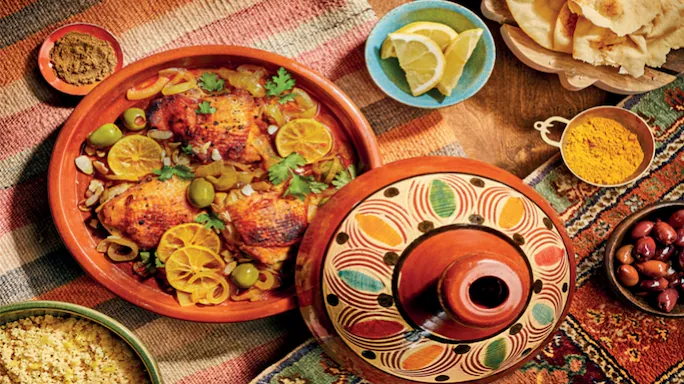
Traditional Moroccan Dishes
Moroccan cuisine is rich and varied, with a combination of Arab, Berber, and Mediterranean influences. Some must-try dishes include:
- Tagine: A slow-cooked stew named after the clay pot it’s cooked in. Variants include chicken with preserved lemons and olives, lamb with prunes, and vegetable tagine.
- Couscous: Often served on Fridays with meat, vegetables, and chickpeas.
- Pastilla: A flaky pastry stuffed with pigeon or chicken, almonds, and spices, often sprinkled with cinnamon and sugar.
- Harira: A hearty soup made with tomatoes, lentils, chickpeas, and lamb, traditionally served during Ramadan.
- Rfissa: A festive dish of shredded flatbread, chicken, lentils, and fenugreek sauce.
For guided culinary experiences, consider booking a Moroccan cooking class during your trip.
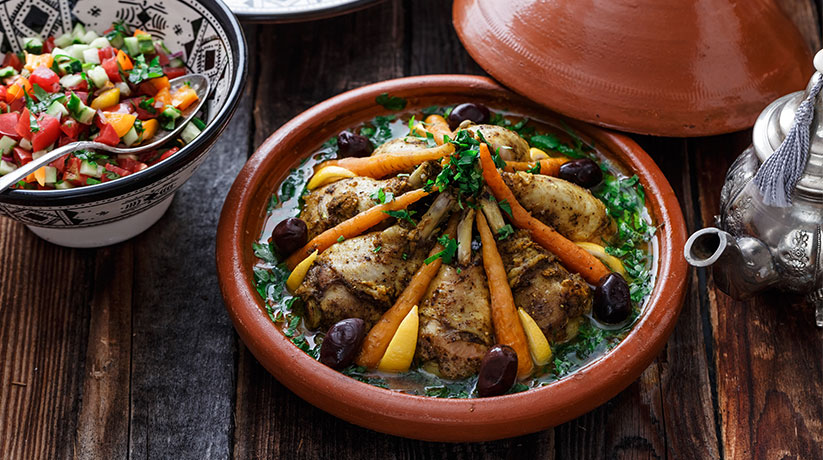
Moroccan Street Food and Snacks
Street food in Morocco is vibrant, affordable, and delicious. Popular options include:
- B’stilla bites: Mini versions of the traditional pastilla, perfect for snacking.
- Msemen: Moroccan square pancakes, often served with honey or cheese.
- Sfenj: Moroccan doughnuts, crispy on the outside and fluffy on the inside.
- Grilled meats and kebabs: Found in medina alleys and local markets.
- Freshly squeezed orange juice: Especially in Marrakech, served in colorful stalls.
Explore the best things to do in Morocco for street food tours and culinary adventures.
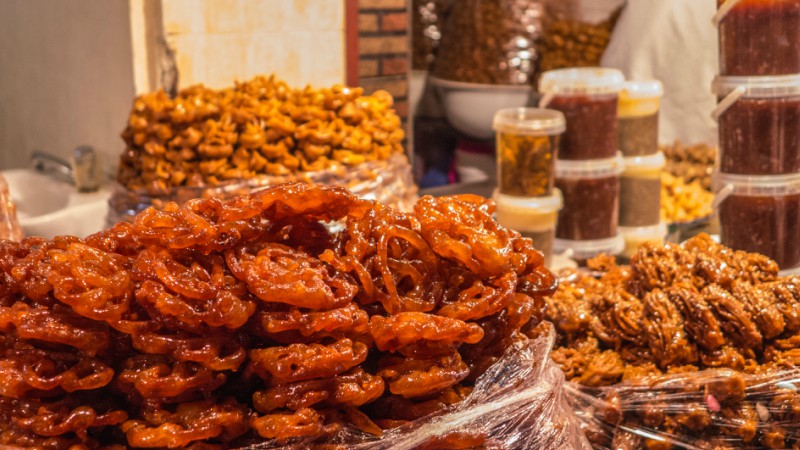
Moroccan Tea Culture
Moroccan mint tea, also called “Moroccan whisky,” is a cornerstone of hospitality and daily life. Typically prepared with green tea, fresh mint, and sugar, it is served multiple times a day. Tea is not just a drink but a ritual, often accompanied by pastries or small snacks.
For an authentic experience, try one of our tea and culinary excursions where locals demonstrate the traditional preparation of mint tea.
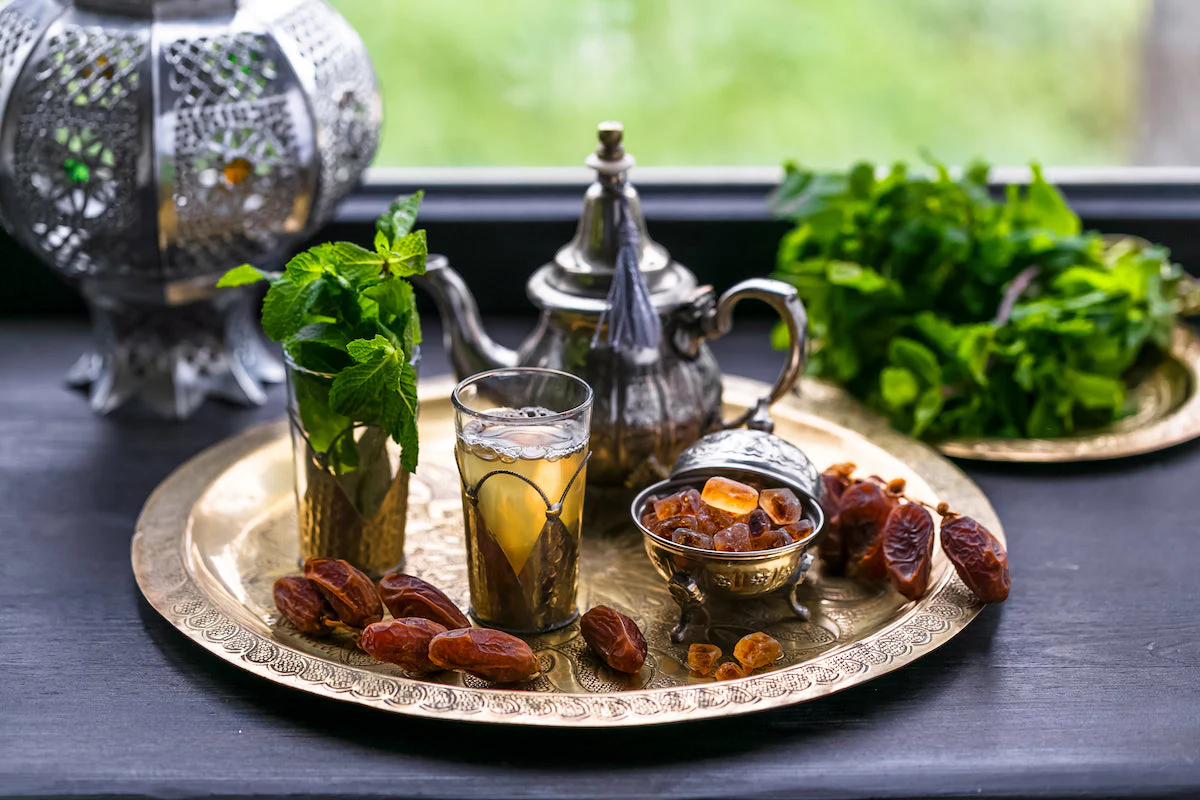
Moroccan Beverages
Apart from mint tea, Morocco offers a range of refreshing drinks:
- Orange juice: Freshly squeezed from local oranges, available in most cities.
- Almond milk shakes: Known locally as “Lait d’Amandes,” often flavored with cinnamon.
- Spiced coffee: Sometimes combined with cardamom or cinnamon.
- Local wines and beers: Found in select restaurants in Marrakech, Casablanca, and Fez.
Desert Dining Experiences
Morocco’s desert regions, such as Merzouga, offer unforgettable culinary experiences under the stars. Enjoy traditional Berber dishes, including lamb tagine, couscous, and freshly baked bread, accompanied by Gnawa music around the campfire. You can book desert tours with meals included to enjoy these unique experiences.
Travel tip: Try a sunset camel ride followed by a traditional dinner for the ultimate Moroccan desert experience.
Luxury Moroccan Dining and Accommodations
For travelers seeking luxury culinary experiences, Morocco offers upscale riads and hotels that blend traditional design with gourmet cuisine. Some highlights include:
- Marrakech Riads: Fine dining inside traditional riads, offering Moroccan and international fusion dishes (best riads in Marrakech).
- Luxury desert camps: Enjoy multi-course meals in the Merzouga dunes (luxury desert tours).
- Culinary tours: Guided trips focused on food, markets, and cooking classes (multi-day Morocco culinary tours).
Planning Your Moroccan Culinary Adventure
- Best time to visit: Spring and autumn for pleasant temperatures and fresh produce.
- Local markets: Visit souks for fresh spices, olives, and vegetables.
- Respect local customs: Moroccan meals are often communal; eating with the right hand is customary.
- Cooking classes and tours: Perfect for immersive culinary experiences. Check Morocco Camel Tours for options.
Moroccan food is more than just eating—it’s a cultural journey, blending centuries of influences, colorful ingredients, and hospitality traditions. From the spices of Marrakech to the Berber kitchens of the Sahara, each dish tells a story of Morocco’s rich heritage. Whether you are sampling street food, dining in luxury, or enjoying a desert feast, Moroccan cuisine will leave an indelible mark on your taste buds and travel memories.
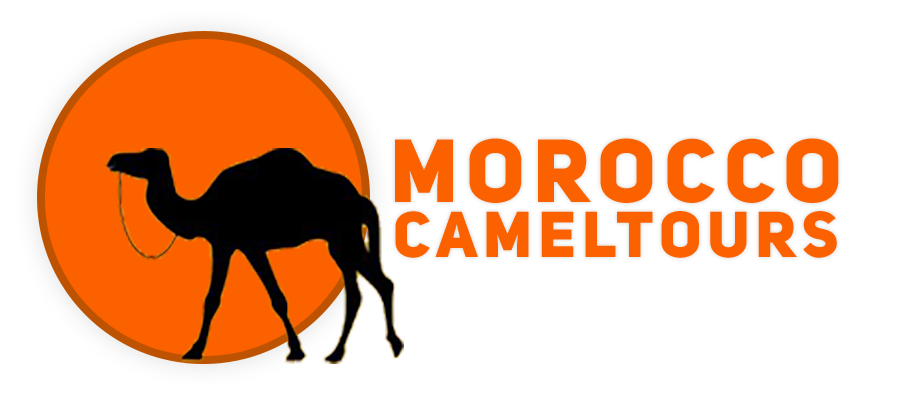
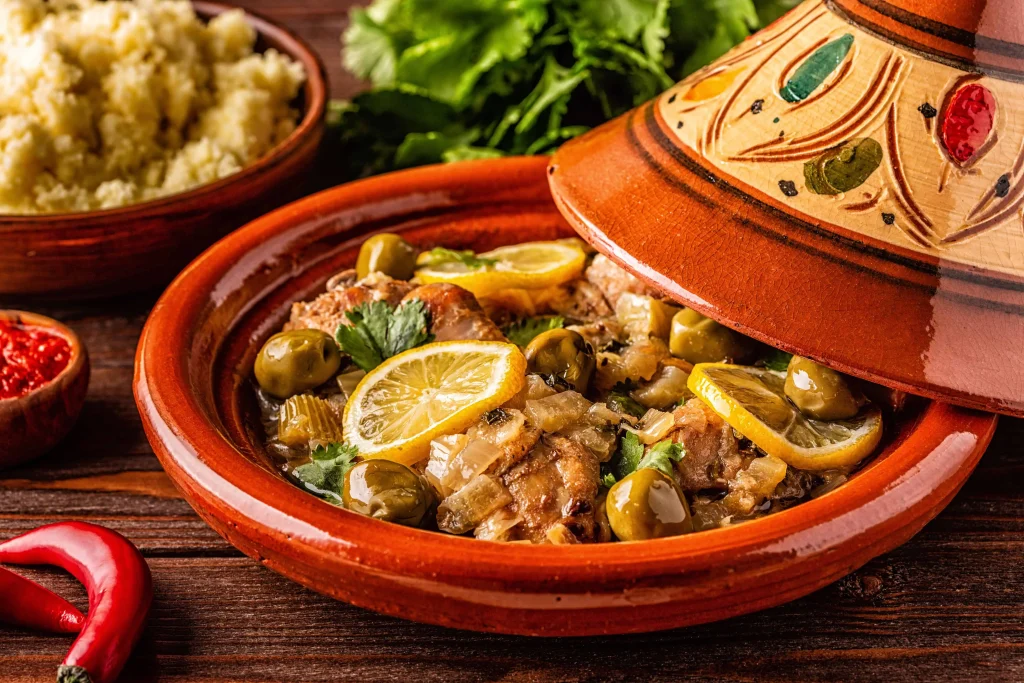


Leave A Comment